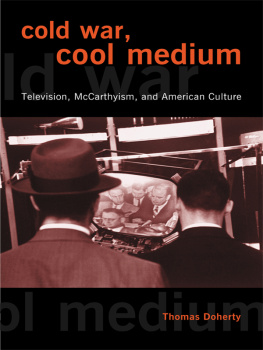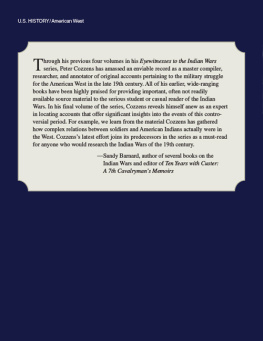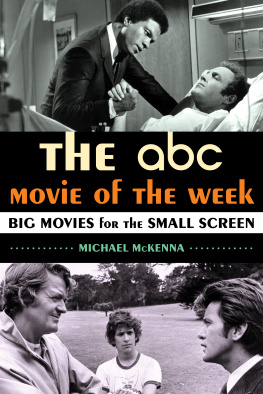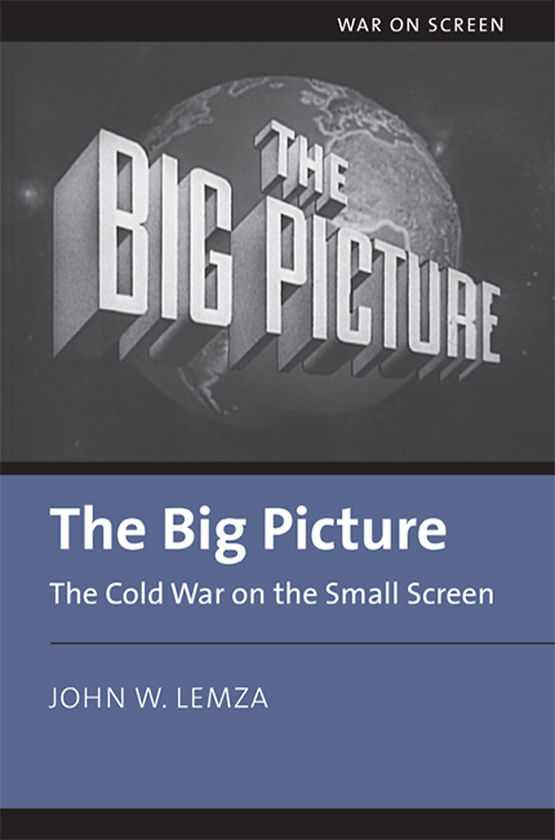Contents
The Big Picture
WAR ON SCREEN
Stacy Takacs and Tony Shaw, Series Editors
The Big Picture
The Cold War on the Small Screen
JOHN W. LEMZA
 University Press of Kansas
University Press of Kansas
2021 by the University Press of Kansas
All rights reserved
Published by the University Press of Kansas (Lawrence, Kansas 66045), which was organized by the Kansas Board of Regents and is operated and funded by Emporia State University, Fort Hays State University, Kansas State University, Pittsburg State University, the University of Kansas, and Wichita State University
Library of Congress Cataloging-in-Publication Data
Names: Lemza, John W., 1954 author.
Title: The big picture : the Cold War on the small screen / John W. Lemza.
Description: Lawrence, Kansas : University Press of Kansas, 2021. | Series: War on screen | Includes bibliographical references and index.
Identifiers: LCCN 2020058635
ISBN 9780700632527 (cloth)
ISBN 9780700632534 (paperback)
ISBN 9780700632541 (epub)
Subjects: LCSH: Big picture. | United States. ArmyOn television. | Cold War on television. | National characteristics, American, on television. | Documentary television programsUnited StatesHistory and criticism. | Propaganda, American.
Classification: LCC UA25 .L46 2021 | DDC 791.45/6581dc23
LC record available at https://lccn.loc.gov/2020058635.
British Library Cataloguing-in-Publication Data is available.
Printed in the United States of America
10 9 8 7 6 5 4 3 2 1
The paper used in the print publication is acid free and meets the minimum requirements of the American National Standard for Permanence of Paper for Printed Library Materials Z39.481992.
Contents
Series Editors Foreword
The Big Picture: The Cold War on the Small Screen, by John W. Lemza, is the first in a series of books investigating the representation of war, the military, and militarism in screen media. Each book in the series focuses on a particular text or trope common to audiovisual depictions of war and the military and offers a history of the development, distribution, and reception of that text or trope. As the United States and other nations have moved away from conscription and toward the professionalization of their fighting forces, the experience of military life has become relatively mysterious to civilian publics. Films, television programs, and video games are some of the most accessible, and potentially misleading, sites for the construction of public knowledge about the military in the absence of direct experience. Not only do they produce particular, ideologically inflected ideas about life at war or in camp, ideas that may then affect political priorities; they also have been instrumentalized by fighting forces as tools for recruitment, retention, and memorialization, thereby directly participating in the ongoing militarization of civil societies. A critical examination of their modus operandi can provide insight into the institutional discourses that structure and sustain military organizations, as well as the practices that generate popular support for such organizations. It can illuminate the hidden world of military life for civilians and illustrate the influence of mythography on political decision-making processes. Indeed, it can reveal the myth-making process in action.
The argument of the War on Screen series is not that films, TV shows, or video games document or reflect political processes, at least not in a simple way. It is that cultural texts of this sort shape our ideas about war, the military, and militarism and, in the process, make practices of waror peacemore or less sustainable. John Lemzas The Big Picture is a prime example of the approach. Through meticulous archival research, he explicates the production, distribution, and reception history of this important television seriesa series produced by the US Armys Office of the Chief Information Officer with the assistance of the US Army Signal Corps and the Army Pictorial Service. The Big Picture was designed as a public relations vehicle to tell the army story to a public skeptical about the need for permanent mobilization postWorld War II. With the formation of new national-security state apparatuses in 1947, including the creation of a Defense Department, Joint Chiefs of Staff, and a separate air force, The Big Picture became a vehicle through which the Army tried to reshape its identity and sell its relevance to politicians easily distracted by shiny new weapons and modes of warfare (atom bombs, ballistic missiles, air war, maneuver warfare). The Big Picture also contributed to public morale-building efforts during the Cold War by explaining the nations political creeds to soldiers and civilians alike. As Lemza shows, The Big Picture offered a primer on American history, political doctrines, and shared value systems and, both implicitly and explicitly, contrasted our values to those embraced by the Soviet state. The program didnt just explain who we (Americans) are, what we stand for, or why we must fight. It became a major vector through which to propagate the states mythic conceptions of national identity and purpose, particularly, as Lemza notes, the exceptionalist canard that Americans are reluctant fighters.
The Big Picture was distributed through syndication to over 300 stations in dozens of markets for over twenty years (19511971), making it one of the longest-running TV series in history. Its programs were used into the 1970s for internal army orientation purposes and delivered to a captive audience of millions of military personnel stationed on US bases overseas via the American Forces Network. Multiple generations of future army officers claim it inspired their love of service and helped foster better civil-military relations through partnerships with organizations such as the Boy Scouts and the United Service Organizations (USO). And, of course, it was used as a recruitment and retention vehicle, enticing young Americans into military service with its promises of education, high-tech training, and adventure. Perhaps its most important legacy, however, is the way it humanized the US soldier, inspiring faith in the skill, dedication, and purpose of American service men and women charged with defending the nation. I believe we can see in the series the roots of our current mandate to support the troops, no matter the cause or their actions.
Because the series charts many of the important shifts in foreign policy and military doctrine from 1951 to 1971, it can be used in college courses or public talks to document those shifts, but, as Lemza argues, strict documentary it aint. Particularly for college classrooms, this companion to The Big Picture can be used alongside the films themselves to inspire critical thinking about the motives behind, and inevitable slant of, the documentary texts. Using it in this way would enable instructors to denaturalize the Cold War consensus and open space for richer discussions of history as a process of negotiation and compromise. As a production history, moreover, The Big Picture raises important issues of access (who can speak), power (who can be heard), and impact (what people make of the message) that are central to media literacy, history, and archival studies. For all of these reasons, The Big Picture should be a welcome addition to the college curriculum. Military buffs, too, will find much here to cherish, as the book provides the only systematic review of the Big Picture cataloga catalog that stretches to some 600 episodes! As a production of the Department of Defense, The Big Picture television series has always been part of the public domain, and you can find many of the episodes on the internet. However, the full body of episodes is available only at the National Archives and Records Administration in College Park, Maryland, which has released only a small sample of The Big Picture output. If you want to know more about the episodes that cant be found online, this is the book for you!









 University Press of Kansas
University Press of Kansas